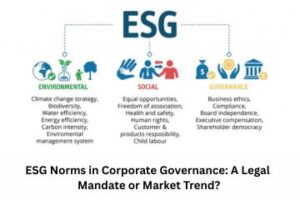Domestic Violence: Evaluating the Repercussions for Males and Females
Written By: Nikita Mandal
Domestic Violence
Abuse in the context of any romantic relationship is abusive by describing the above-specified conditions. So it affects different men, women or teenagers and boys, married or unmarried. An intimate partner is defined as a person in an intimate relationship with violence including emotional, psychological, physical, sexual, or economic abuse using any means to control any other way. Types of domestic violence include physical, emotional, or emotional abuse, sexual, economic, financial, and spiritual abuse.
Physically abusive behaviour includes any form of assault, pinching, pushing, hitting, or slapping, including shooting, stabbing, and murder. Verbal, emotional, emotional, or emotional violence is described using words that criticize the victim, husband, or another intimate partner, defilement or otherwise reduce confidence. Sexual abuse refers to any behaviour that the victim uses to control and control the victim, such as intimidating the victim into unprotected sex or engaging in sexual activity where she does not want to participate. Economic or financial objections are described as threatening or otherwise limiting the financial freedom or protection of the victim.
Spiritual abusers either force the victim to take part in the religious practice of batters instead of their own, or force the reciprocal children into a religion that is not in favour of the victim. Stacking refers to repeated harassment and threatening behaviour, including appearing at the victim’s home or workplace, making harassing phone calls, keeping voice mail, email, or mail messages, leaving unwanted items, or vandalizing the victim’s property. It is usually committed by perpetrators of other types of domestic violence.
Domestic violence against women occurs in all social and economic classes, but women living in poverty are more likely to be victims of violence. Further research is needed to fully understand the link between poverty and domestic violence against women. About 61% of women agree to beat their wives if the husband is fair in certain circumstances, while about 8% of rural and 69% of urban women believe that their husbands have the right to beat them. One in ten people are abducted, hastily married, raped, and marital raped.
Marital rape is still not recognized under the 2005 Criminal Code. The Ethiopian government amended the family law in 2000 and the criminal law in 2005 to protect women’s rights. Article 35 (4) of the Criminal Code and the Constitution condemns harmful traditional behavioural practices. In 1981, Ethiopia
ratified the Convention on the Elimination of All Forms of Discrimination against Women. However, Ethiopia has extensive evidence of domestic violence against women and related causes.
Evaluating the repercussions for male and female
Sexual coercion is defined as any situation in which a person uses oral or physical means to engage in sexual activity against consent, including the administration of drugs or alcohol, with or without the consent of the other person. Most studies comparing the prevalence of sexual violence between men and women with close partners have been conducted with the college student population. Regardless of the population, each study found that a greater number of men than women engaged in sexual violence against partners.
Stalking is a repetitive pattern of unwanted, harassing, or threatening behaviour committed by one person against another. Acts include telephone harassment, being followed, receiving unwanted gifts, and other similar forms of intrusive behaviour. The majority of women who are stalked by current or former intimate partners also report having been physically assaulted these partners, also report having been sexually assaulted by the same partners who stalked them.
stalking behaviours do victims experience for Female stalking victims most commonly report being followed, spied on, or watched at home, at work, or at places of recreation. Many also report receiving unwanted phone calls, letters, or gifts, and having restraining or protective orders violated. Battered women stalked by their current abusive partners report being harmed, having mail stolen, being watched, receiving unwanted calls at home, being followed, and receiving unwanted visits from their current or former
abusive partners. Battered women experience multiple, serial forms of violent and harassing stalking behaviours perpetrated against them, sometimes as often as every day.
Aggressive behaviour can cause physical or emotional harm to others. It can range from verbal abuse to physical abuse. It may involve personal property damage.
Aggressive behaviour violates social boundaries. It can wreak havoc on our relationships. When we engage in aggressive behaviour, we feel annoyed and restless. Can feel the emotion. It can be difficult for us to control our behaviour. Mutual violence is a relationship in which both partners use physical violence. How much more violent one partner may be than the other, or one partner’s violence may be in self-defence, or one partner may use more deadly forms of violence than the other (sexual abuse). Incidents of serious and violent sexual abuse such as violence are more prevalent among women than men such as sexual rape and coercion control and women are often and more severely injured.
Self-defence opens up this source of freedom for women in an imperfect world.
Building confidence in physical resistance skills allows women to feel more capable and more at peace when in potentially dangerous areas as they know the proper techniques to help fend off an attacker.
Every day, on social media or on television, I hear about women being abused. There are plenty of stories of women who have heard of sexual violence or being randomly attacked by strangers as well as being abused in some way. Self-defence training is a must-have for every woman. Self-defence training is recommended in the criminal world so that women can resist any kind of sexual abuse as well as random attacks.
Case Laws
Bombay High Court: Order of maintenance under DV Act set aside by HC in absence of any act of Domestic Violence committed by husband [ Date – 17-03-2019]
The case titled Vijayanand Dattaram Naik v. Vishranti Vijayanand Naik, was decided on date 13-02-2019 by Justice C.V. Bhadang of Goa bench of Bombay High Court, allowed a petition filed by the husband and quashed trial court’s order whereby it had partly allowed the wifes’ application filed under Section 20 of the Protection of Women from Domestic Violence Act, 2005. It was left open for the wife to take recourse to any other remedy as may be available under law. The husband was directed to pay a monthly
the sum of Rs 5,000 for a period of six months.
Delhi High Court: Domestic Violence vs Section 125 CrPC: Wife entitled for maintenance under both provisions subject to adjustment [ Date – 20-05-2019] Justice Sachdeva has passed the order in the case titled Vikas Bhutani v. State on
17.05.2019. Delhi High Court has observed that even if maintenance under Section 125 CrPC was granted, the wife is entitled to maintenance for domestic violence though there can be an adjustment qua earlier maintenance. The object of the grant of maintenance is to afford a subsistence allowance to the wife, who is not able to
maintain herself. The court directed the amount of Rs. 40,000 per month to be paid by the petitioner from the date of filing of the application.
Conclusion
Domestic violence against women was relatively high in different regions. There is a direct relationship between the victim of domestic violence and at the same time the sociodemographic characteristics of the perpetrator. Appropriate health promotion information activities are needed to address the causes of domestic violence against women or to prevent and control the problem of women being attacked.
Related Post
Rise of Police Brutality and Need For better Control Measures in Recent times
Usage of Blockchain in the Indian Banking System
How To Get Burden Of Proof Shifts To The Nature Of Crime?
Right of Adoption to all religious communities: A Constitutional perspective
Inter-Religious Marriage and Inter Caste Marriage: Changing Patterns Of Family Marriage




